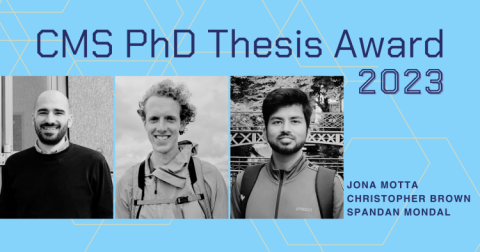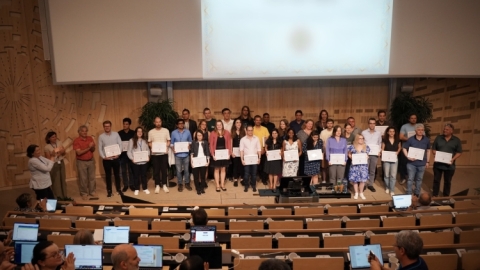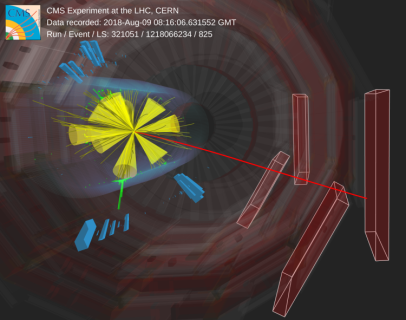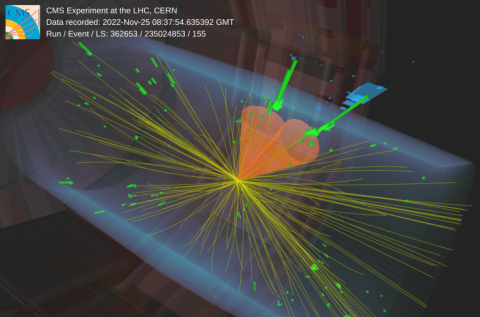CMS at ICHEP 2024
CMS has released 37 new results for the ICHEP 2024. These results cover the full spectrum of the CMS physics program, including a few relevant highlights.
Scouting the flow of data for the future High Luminosity LHC
How to manage large amounts of data without losing any interesting ones? The selection of data concerning particle collisions in the LHC is critical since it will determine all the resulting analyses.
ATLAS and CMS celebrate a decade of innovation by the RD53 Collaboration
Starting in 2029, the High-Luminosity LHC (HL-LHC) will provide much higher collision intensities to the ATLAS and CMS experiments, with up to 200 concurrent collisions (or pileup) per bunch crossing expected.
CMS Industry Gold Awards 2023
Since the year 2000, the CMS Collaboration has recognised industry partners who've played a crucial role in building the experiment. The CMS Gold Award acknowledges companies that consistently deliver high-quality components, meeting deadlines and specifications.
CMS PH.D. THESIS AWARD WINNERS 2023
The CMS Collaboration is thrilled to announce that laureates of the 2023 CMS PhD Thesis Award are Jona Motta, Christopher Edward Brown, and Spandan Mondal. This award recognizes exceptional doctoral research within the collaboration that pushes the boundaries of high-energy physics.
CMS Awards 2023
It's time to shine a light on the 2023 CMS award winners! Each year, the CMS Award committee recognises outstanding contributions from members of the CMS Collaboration, honouring their dedication to the performance of CMS sub-detectors and, therefore, the CMS experiment!
Going the extra mile to squeeze supersymmetry out of our data
Supersymmetry, or SUSY in short, is an exciting and beaut










